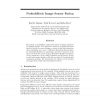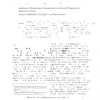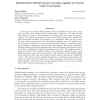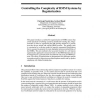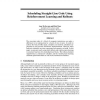NIPS
1998
15 years 2 months ago
1998
We present a probabilistic method for fusion of images produced by multiple sensors. The approach is based on an image formation model in which the sensor images are noisy, locall...
NIPS
1998
15 years 2 months ago
1998
A new algorithm for Support Vector regression is described. For a priori chosen , it automatically adjusts a flexible tube of minimal radius to the data such that at most a fracti...
NIPS
1998
15 years 2 months ago
1998
NIPS
1998
15 years 2 months ago
1998
A new paradigm is proposed for sorting spikes in multi-electrode data using ratios of transfer functions between cells and electrodes. It is assumed that for every cell and electr...
NIPS
1998
15 years 2 months ago
1998
Training a Support Vector Machine (SVM) requires the solution of a very large quadratic programming (QP) problem. This paper proposes an algorithm for training SVMs: Sequential Mi...
NIPS
1998
15 years 2 months ago
1998
NIPS
1998
15 years 2 months ago
1998
108
click to vote
NIPS
1998
15 years 2 months ago
1998
In this paper, we consider Markov Decision Processes (MDPs) with error states. Error states are those states entering which is undesirable or dangerous. We define the risk with re...
128
Voted
NIPS
1998
15 years 2 months ago
1998
This paper introduces a method for regularization of HMM systems that avoids parameter overfitting caused by insufficient training data. Regularization is done by augmenting the E...
NIPS
1998
15 years 2 months ago
1998
The execution order of a block of computer instructions can make a difference in its running time by a factor of two or more. In order to achieve the best possible speed, compiler...
